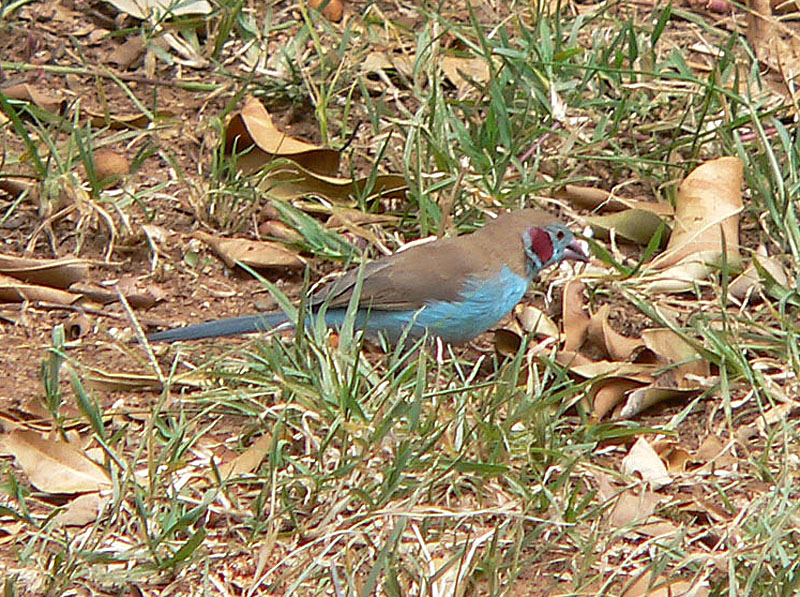In an earlier article concerning the cordon blue (Introducing the Red-Cheeked Cordon Blue, Uraeginthus bengalus), I mentioned that this popular pet trade finch often nests close to wasp colonies in its native West Africa. It has long been known that certain birds derive protection from predators by nesting near colonies of ants, bees, wasps and other aggressive social insects. It has been shown that wasps eliminate nearly all parasitic botflies from nearby nests of oropendolas and yellow-rumped caciques, and wasp nests experimentally re-located (fun job!) to trees bearing the nests of rufous-naped wrens dramatically reduced predation by monkeys.
In the case of the cordon blue, pairs nesting near wasp colonies are usually more than twice as likely to successfully fledge chicks as are those in trees un-protected by wasps. An article in The Auk (Beir, P., 2006) has raised the possibility that certain wasps (Ropalidia cincta) may, in turn, derive benefits from living in proximity to nesting cordon blues.
Researchers working in Ghana noted that wasps establishing new colonies showed a strong preference for trees occupied by cordon blues. They discovered that the sting of the Ropalidia wasp is relatively ineffective against ants, which raid wasp nests, and smaller wasps, which parasitize the larvae. Cordon blues, on the other hand, relish small insects and may help the Ropalidia wasps by devouring ants and smaller wasp species. Further studies are under way.
I’m usually all for experimentation, but please do not be tempted to move any wasp nests into your cordon blue’s aviary!
An interesting article (Biotropica) on ant/bird nesting associations in Africa is posted at:
http://faculty-staff.ou.edu/K/Michael.E.Kaspari-1/PDF_reprints/Kaspari_1990_Biot.pdf
 That Bird Blog – Bird Care and History for Pet Birds
That Bird Blog – Bird Care and History for Pet Birds

